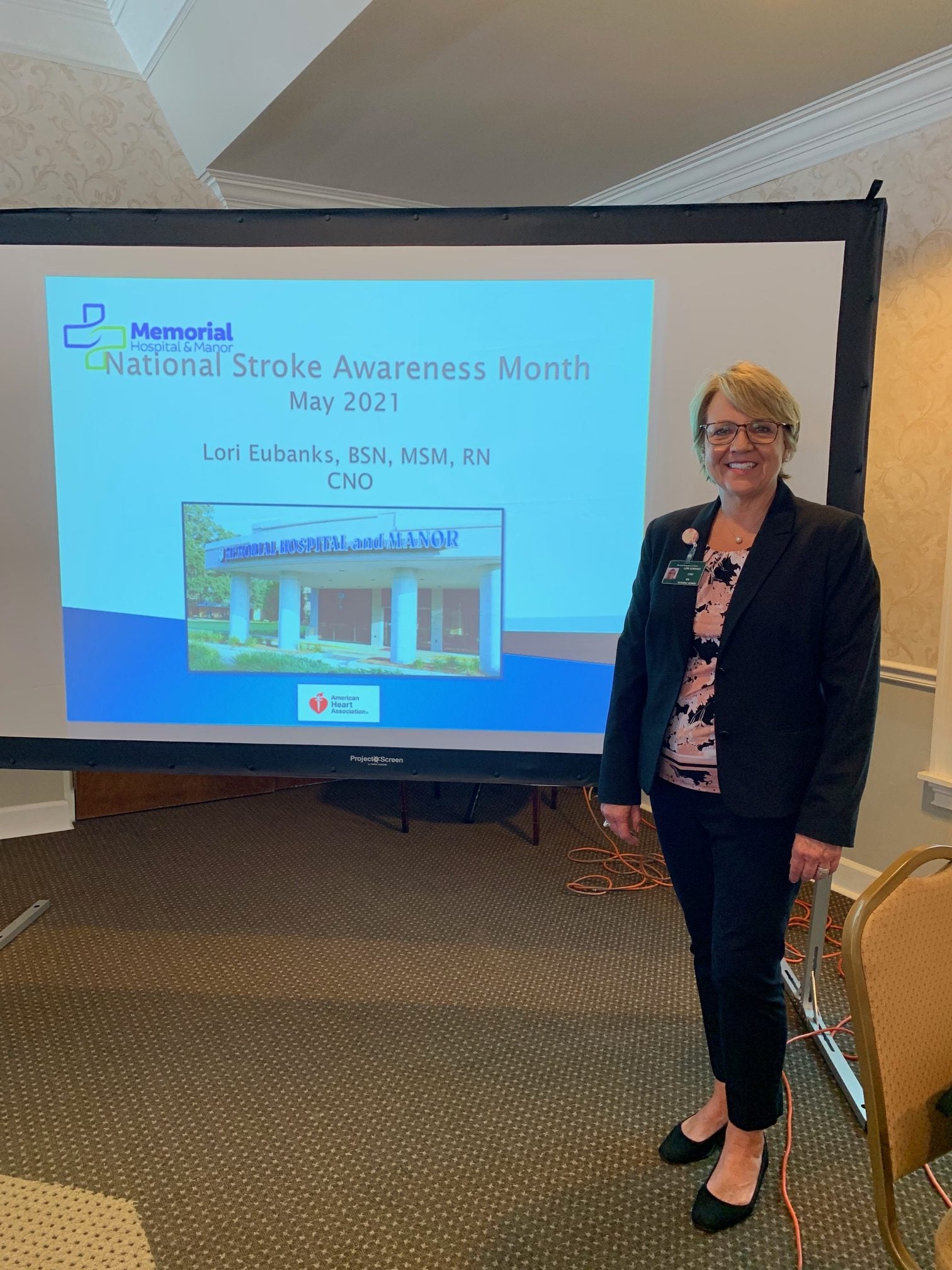Rotary Club learns about stroke prevention and treatment
Published 9:47 am Wednesday, May 26, 2021

- Lori Eubanks of Memorial Hospital and Manor gave an educational presentation about strokes to the Bainbridge Rotary Club Tuesday.
|
Getting your Trinity Audio player ready...
|
In honor of May being National Stoke Awareness Month, Lori Eubanks, BNS, MSN, RN, CNO, of Memorial Hospital and Manor, presented the Rotary program this week.
She began by playing a video titled, “A Stroke Survivor’s Story”. It related the experience of athlete Michael Johnson, who collapsed with a stroke, unable to walk and wondered if that was to be his future.
He detailed his physical therapy — learning slowly to walk again and working out in a gym two times a day to regain his strength.
Eubanks described what to do if you suspect someone is experiencing a stroke by using the letters F.A.S.T. They stand for face drooping or numbness, arm weakness, speech difficulty and T is for time to call 911, if those apply.
Other signs of stroke are: the sudden numbness or weakness of the face, arm or leg, especially when confined to one side of the body; sudden confusion or trouble speaking and understanding; sudden trouble seeing in one or both eyes; sudden trouble walking, dizziness, loss of balance or coordination and sudden severe headache without a known cause.
Eubanks stressed the importance of seeking medical treatment immediately upon experiencing any of the above signs. She said Memorial Hospital and Manor has a special connection with Tallahassee Memorial Hospital that is utilized immediately when a patient is brought in to Memorial Hospital with stroke symptoms. Speedy and proper medical treatment can reverse the symptoms.
Risk factors for a stroke that cannot be changed include age, (the elderly and women are more prone to strokes), as are those with a family history of strokes. Race also plays a part, as African Americans and those with Hispanic heritage also seem to have more strokes.
Other factors that may play into putting people at high risk for stroke are: high blood pressure, high cholesterol, diabetes, physical inactivity, obesity, carotid artery diseases, peripheral artery disease, atrial fibrillation, Sickle Cell disease, smoking, alcohol and drug abuse.
An interesting factor has arisen with the COVID-19 pandemic. Some of those who have experienced COVID-19, as well as some who have taken the preventive shots, have developed blood clots that may travel to the brain and cause strokes.
Geographic location also plays a role. The USA Southeast seems to have a higher incidence of strokes. That may in part be from socioeconomic factors such as low income, improper diet, lack of adequate medical care, etc. etc.
Eubanks recommended some risk factors to monitor that may help reduce the risk of having a stroke: blood pressure, control cholesterol, reduce blood sugar, become active, eat a proper diet, lose weight, stop smoking, limit alcohol input and develop good sleep habits.





